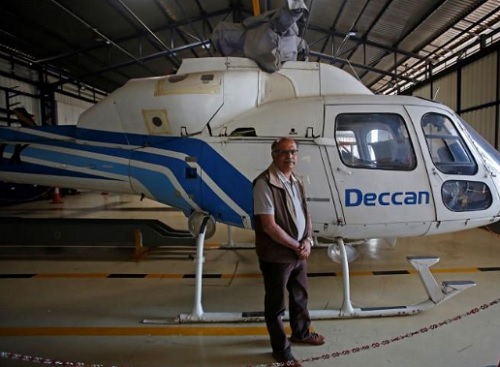BENGALURU/NEW DELHI (Reuters) - The slow pace of fitting out regional airports risks delaying Indian Prime Minister Narendra Modi’s ambitious plan to launch more flights connecting smaller towns and cities and get millions more people using air travel.
The program, flagged off by Modi last year, aims to boost economic growth by refurbishing idled colonial-era airstrips or building newer airports, and incentivizing airlines to offer discounted fares to connect them with bigger cities.
But work on building new airports in small towns and upgrading existing facilities has failed to keep pace, two government officials said, and could knock off course the government’s lofty goal of bringing 100 million more passengers to the skies in the next five years.
Under Modi’s “regional connectivity scheme”, the government planned to open 31 new airports by the end of 2017, but only 16 are operational so far. Some states have said they do not have enough funds to purchase basic equipment such as mandatory fire tenders, one of the officials said.
In other cases it was taking longer than planned to build air traffic control towers or set up terminal buildings equipped with baggage scanners and security systems, said the official.
The federal government has now stepped in, and will procure much of the equipment itself and lease it to state governments to get the 15 remaining airports operational by end-June.
“It is a trade-off. We either keep adding more flights or calibrate the existing ones with the capacity we have,” the official said.
The delays highlight the hurdles Modi - who has campaigned on his ability to successfully implement growth-boosting reforms - faces as he seeks re-election in 2019.
Passenger traffic in India has grown at about 20 percent annually in recent years, making the world’s fastest-growing aviation market lucrative for large and small planemakers.
When launching the scheme in early 2017, the government said it wanted to make flying affordable for the common man wearing simple flip-flops by reviving more than 400 unused and under-utilized airstrips in the country’s vast hinterlands.
The civil aviation ministry has given approvals, in two phases, to nearly a dozen airlines, including start-ups like Air Deccan and Air Odisha as well as established carriers like IndiGo, Jet Airways and SpiceJet, to start flights on more than 450 routes covering 56 new airports.
But with even the first phase still behind schedule - flights have begun on just 60 of the 128 planned routes - the government plans to delay the start of phase three, the two officials said.
One of the officials said that the civil aviation ministry had not expected such a large response to the program, and was now scrambling to get airports ready on time.
“If the pace of development of smaller airports is not accelerated and it does not meet the targets, it will be a major challenge for airlines,” said Arindam Som, an analyst at India Ratings, a Fitch Group company.
Som said that some airlines were looking at these regional routes to feed into their wider network and boost growth.

G.R. Gopinath, founder and chairman of Bengaluru-based Air Deccan, poses next to a helicopter parked in a hangar after an interview with Reuters in Bengaluru, India, February 6, 2018. REUTERS/Abhishek N. Chinnapp
Leave Comments